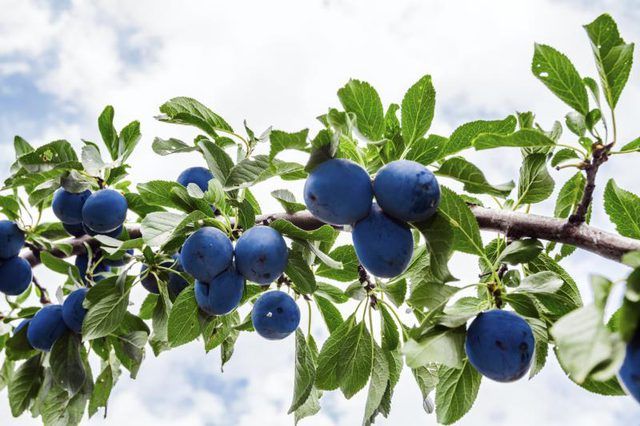Bulbs
Flower Basics
Flower Beds & Specialty Gardens
Flower Garden
Garden Furniture
Garden Gnomes
Garden Seeds
Garden Sheds
Garden Statues
Garden Tools & Supplies
Gardening Basics
Green & Organic
Groundcovers & Vines
Growing Annuals
Growing Basil
Growing Beans
Growing Berries
Growing Blueberries
Growing Cactus
Growing Corn
Growing Cotton
Growing Edibles
Growing Flowers
Growing Garlic
Growing Grapes
Growing Grass
Growing Herbs
Growing Jasmine
Growing Mint
Growing Mushrooms
Orchids
Growing Peanuts
Growing Perennials
Growing Plants
Growing Rosemary
Growing Roses
Growing Strawberries
Growing Sunflowers
Growing Thyme
Growing Tomatoes
Growing Tulips
Growing Vegetables
Herb Basics
Herb Garden
Indoor Growing
Landscaping Basics
Landscaping Patios
Landscaping Plants
Landscaping Shrubs
Landscaping Trees
Landscaping Walks & Pathways
Lawn Basics
Lawn Maintenance
Lawn Mowers
Lawn Ornaments
Lawn Planting
Lawn Tools
Outdoor Growing
Overall Landscape Planning
Pests, Weeds & Problems
Plant Basics
Rock Garden
Rose Garden
Shrubs
Soil
Specialty Gardens
Trees
Vegetable Garden
Yard Maintenance
The Lifespan of a Purple Leaf Plum Tree
The Lifespan of a Purple Leaf Plum Tree. The purple leaf plum tree (Prunus cerasifera), also called cherry plum, creates a focal point in the home landscape because of its deep red-purple leaves and small stature. This native of western Asia rarely lives past 20 years, writes Horticulture Assistant Ted Griess at the University of Nebraska-Lincoln...

The purple leaf plum tree (Prunus cerasifera), also called cherry plum, creates a focal point in the home landscape because of its deep red-purple leaves and small stature. This native of western Asia rarely lives past 20 years, writes Horticulture Assistant Ted Griess at the University of Nebraska-Lincoln Extension in Buffalo County, often succumbing to pests and disease problems. But there are steps you can take to control them.
Short in Stature
Purple leaf plum grows up to 25 feet tall and spreads about 12 feet wide making it a good choice for growing near utility lines. This vase-shaped tree is one of the earliest spring flowering trees. In early spring it puts out fragrant, pale pink flowers that give way to dense summer foliage that provides lots of shade. It also bears small, red fruit in summer that is edible and used for making wine. In fall, purple leaf plumís leaves spiral to the ground leaving bare branches.
Right Growing Conditions
To maximize the lifespan of purple leaf plum, grow it in its preferred conditions. This tree, hardy in U.S. Department of Agriculture plant hardiness zones 5 through 8, likes full sun which gives it its color. Preferring acidic soil, it grows in clay, loam or sandy soil as long as it is well-draining and loose; compacted soil can slow its growth. Purple leaf plum tolerates some salt spray as long as itís in a warmer climate. Planted in its preferred conditions, purple leaf plum grows 24 to 36 inches per year until it reaches its maximum height, according to Cal Poly's Urban Forest Ecosystems Institute.
Prune to Prevent Disease
Damaged branches are entryways that allow fungi and insects to enter purple leaf plum and cause disease, shortening its lifespan. Increase the lifespan of the tree by pruning away damaged or dead branches in the spring and throughout the growing season. Make pruning cuts at the next branch below the damaged area to reduce the risk of future disease. Diseased branches also shorten a purple leaf plum's lifespan and should be pruned as soon as you see signs of disease. For diseased branches, make the cut at least 6 inches from the diseased area at the next branch junction. If the next junction is less than 6 inches away, cut at a junction further away. To prevent spreading disease, always spray pruners with a household disinfectant before pruning, even if disease does not appear to be present.
Spray to Control Insects
Purple leaf plum is susceptible to attack by several insects. Japanese beetles eat away foliage leaving leaves that look like skeletons. Aphids and scale insects pierce leaves and suck out chlorophyll leaving behind curled leaves and damaged branches, both reducing the tree's lifespan. Increase the lifespan of a purple leaf plum by spraying it with horticulture oil at the beginning of the growing season to kill damage-causing overwintering insect eggs and larvae, or spray during the growing season when you notice problem insects. Treat purple leaf plum by mixing 2 tablespoons of horticulture oil in 1 gallon of water. Spray the entire tree in the early morning from top to bottom, thoroughly coating leaves, including undersides, branches and trunk. Treat the tree every seven to 14 days to control pests. When working with horticulture oil, protect yourself by wearing gloves, eye protection, long sleeves and pants, and spraying it on a calm day. Follow all directions and warnings on the product label.